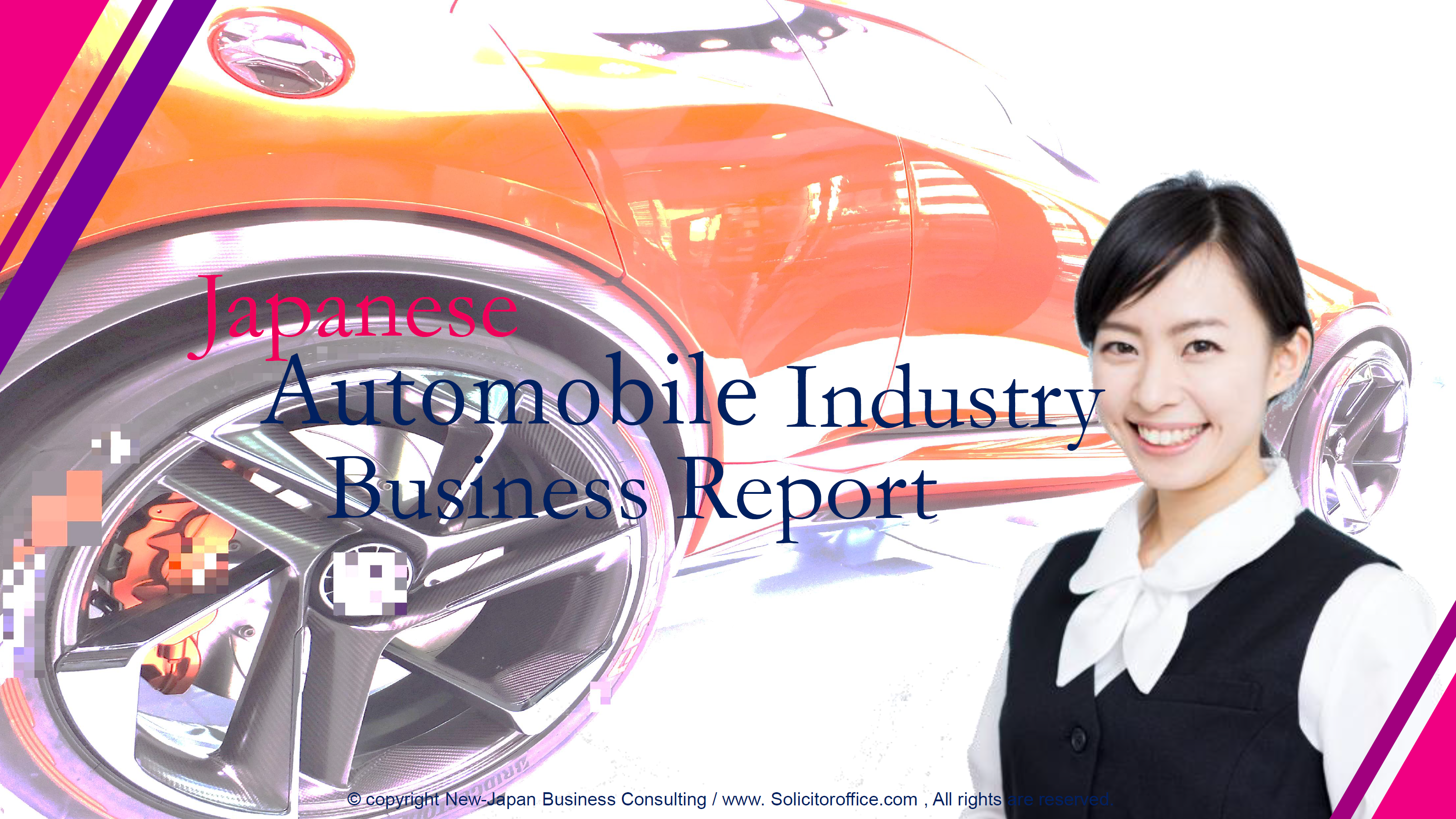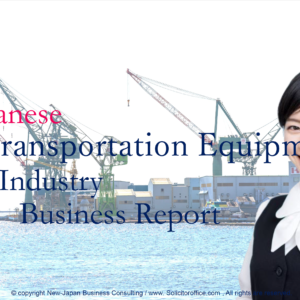説明
Japan’s Auto Industry Is at a Strategic Crossroads. Are You Equipped to Navigate It?
Japanese Automobile Industry Report – 2025 Edition
A Strategic Market Intelligence Report for Investors, OEMs, Mobility Innovators, and Global Business Leaders
Japan is the third-largest car-producing nation in the world, home to some of the most globally respected automotive brands—Toyota, Honda, Nissan, Subaru, Mazda, Suzuki, Mitsubishi—and an intricate network of Tier 1–3 suppliers.
But the era of predictable dominance is over.
The Japanese auto industry is undergoing one of the most profound transformations in its 100-year history. Electrification, carbon neutrality, connectivity, autonomous driving, new mobility models, and changing global trade dynamics are creating an entirely new competitive landscape.
Our Japanese Automobile Industry Report – 2025 Edition offers the strategic clarity needed to navigate this moment of disruption. Whether you’re expanding into the market, developing a product roadmap, evaluating a supply chain shift, or investing in EV infrastructure, this report delivers data-driven insight, sector-specific forecasts, and actionable business intelligence.
Why Japan’s Auto Industry Demands Global Attention
While EV narratives dominate headlines globally, Japan continues to take a distinctive approach to its automotive evolution. Hybrid technologies, hydrogen fuel cells, and export-first strategies shape its industrial logic. Yet, domestic demand is shrinking, and global pressure to go electric is intensifying.
Key Characteristics of the Japanese Automobile Sector:
– 🔧 Deep Vertical Integration
The industry is still shaped by keiretsu-style supply chains, where loyalty, integration, and quality define relationships between OEMs and suppliers.
– 🧓 Domestic Market Contraction
Japan’s aging population and urban density are reducing new vehicle ownership, shifting the focus to fleet, export, and mobility-as-a-service models.
– 🔋 EV Reluctance—Until Now
Japan was a hybrid stronghold, but 2025 marks a major pivot: new EV launches, battery investments, and aggressive overseas EV expansion are accelerating.
– 🚚 Global Export Powerhouse
Japan exported over 3.5 million vehicles in 2024. Its dependence on foreign markets—especially the U.S., ASEAN, and Europe—is increasing as local demand plateaus.
– 🌏 Supply Chain Realignment
China tensions and semiconductor shortages are pushing companies to diversify suppliers, regionalize manufacturing, and invest in greater resilience.
Industries covered in this report are represented by the following companies
NISSAN MOTOR CO.,LTD.
ISUZU MOTORS LIMITED
TOYOTA MOTOR CORPORATION
HINO MOTORS, LTD.
MITSUBISHI MOTORS CORPORATION
Mazda Motor Corporation
HONDA MOTOR CO.,LTD.
SUZUKI MOTOR CORPORATION
SUBARU CORPORATION
#If you would like to purchase reports on these individual companies, please contact us as we can provide custom-made services.
What You’ll Discover in the Report
This 276+ page deep-dive offers a clear, structured view of Japan’s auto industry—both where it stands today and where it’s going. From factory floors to EV showrooms, from Tier 1 megasuppliers to emerging software players, this is your roadmap to understanding Japan’s evolving auto sector.
Key Sections Include:
Introduction To Automobile Industry Business Models
Overview Of The Global Automobile Industry
The Importance Of Business Models In The Automotive Sector
Key Characteristics And Principles Of Automotive Business Models
1. Overview And Historical Development Of The Japanese Automobile Industry
1.1 Rapid Growth From The Post-War Reconstruction Period: The Dawn Of The Automobile Industry
1.2 Global Expansion And International Competitiveness
1.3 Post-Bubble Restructuring And Shift In Management Strategy
1.4 The Position Of The Japanese Automobile Industry In The Modern Era
2. Key Business Models Of The Japanese Automobile Industry
2.1 Vertical Integration Model: The Toyota Production System And Its Impact
2.2 Parts Supply Chains And Affiliate Relationships: The Role Of Tier Structures
2.3 Breaking Away From Dependence On The Domestic Market And Global Market Strategies
2.4 Digitalisation And Efficiency Of The Supply Chain
2.5 Subscription And Mobility-As-A-Service (Maas) Models
2.6 Hybrid Models: Combining Ownership, Leasing, And Mobility Solutions
3. Technological Innovation And The Transformation Of The Automotive Industry
3.1 Evolution Of Hybrid Vehicles (Hvs) And Electric Vehicles (Evs)
3.2 Practical Applications Of Automated Driving Technology And Connected Cars
3.3 Fuel Cell Vehicles (Fcvs) And The Hydrogen Society
3.4 Trends In The Adoption Of Lightweight Technologies And New Materials
3.5 Advances In Manufacturing: Robotics, AI, And Additive Manufacturing
4. Regional Vehicle Production And Market Strategies
4.1 Market Size, Segmentation, And Regional Insights
4.2 Emerging Economies And Their Role In The Automobile Market
4.3 Distribution Of Domestic Production Sites And Impact On Local Economies
4.4 Advantages And Challenges Of Japanese Vehicles In The Asian Market
4.5 Competitive Strategies And Local Production In European And US Markets
4.6 Expansion Into And Prospects For Emerging Markets (Africa, Middle East And South America)
5. Environmental Regulations And Sustainable Mobility
5.1 The Shift Toward Sustainability And Green Technologies
5.2 Regulatory And Policy Influences On Business Models
5.3 Changes In Japanese And International Environmental Regulations And Their Impact
5.4 Carbon Neutral Strategies For A Decarbonised Society
5.5 Promoting Recycling Technologies And The Circular Economy
5.6 Energy Mix And The Challenges Of The Electrification Shift
6. Integration With Other Industries And New Mobility Services
6.1 The Convergence Of Automobiles And ICT: The Development Of Mobility As A Service (Maas)
6.2 Cooperation Between The Automotive And Energy Industries: Electric Infrastructure Development
6.3 The Smart City Concept And The Role Of The Automobile
6.4 Creating New Business Models Through Cooperation With The Insurance Industry
7. Geographical And Cultural Influences On Automotive Business Models
7.1 Regional Differences In Vehicle Ownership And Usage Trends
7.2 The Impact Of Cultural Preferences On Business Strategies
7.3 Case Studies: Successful Business Models In Global Markets
8. Competitiveness And Challenges In The Japanese Automobile Industry
8.1 Comparative Analysis Of Major Domestic Manufacturers (E.G. Toyota, Nissan, Honda)
8.2 Competition From Foreign Manufacturers: Developments In South Korea, China, Europe And The USA
8.3 Labour Shortages And The Impact Of Automation
8.4 Impact Of Exchange Rate Fluctuations And International Trade Policy
9. Supply Chain Risk Management And Resilience
9.1 Vulnerability Of Supply Chains To Natural Disasters And Pandemics
9.2 Semiconductor Shortages And Component Procurement Challenges
9.3 Geopolitical Risks And Optimising Overseas Locations
9.4 Supply Chain Diversification And Regional Diversification Strategies
10. The Future Of The Automotive Industry: Emerging Trends And Prospects
10.1 Realisation And Impact Of A Fully Automated Society
10.2 Diffusion Of Subscription-Based Business Models
10.3 Shared Economy And The Growth Of Ridesharing Services
10.4 Feasibility Of Space Exploration And Flying Cars
10.5 Evolving Consumer Preferences: Personalization And Digitalization
10.6 The Role Of Artificial Intelligence In Shaping Future Strategies
10.7 Predictions For EV And Autonomous Vehicle Adoption
10.8 Global Consolidation And Strategic Partnerships
11. International Regulations And Policies Facing The Japanese Automobile Industry
11.1 International Trade Agreements And Trends In Vehicle Imports And Exports
11.2 International Standardisation Of Safety Regulations And Technical Standards
11.3 International Coordination Of Environmental Policy And The Role Of Japan
11.4 Government Support And The Future Of Industrial Policy
12. Key Takeaways And Strategic Recommendations For Industry Stakeholders
12.1 Adapting Business Models To Future Market Dynamics
12.2 Leveraging Technology For Competitive Advantage
12.3 Building Resilient And Sustainable Business Models
13. Conclusion: Towards Sustainable Growth Of The Japanese Automotive Industry
13.1 Strategies To Maintain Sustainable Competitiveness
13.2 Technological Innovation And Business Model Evolution
13.3 Towards Global Leadership
14. References And Additional Resources
14.1 Industry Reports And Market Data Sources
14.2 Recommended Literature On Innovation In Automotive Business Models
Who This Report Is For
This report is made for forward-thinking professionals seeking real advantage in a shifting market:
– OEM Strategy Teams & Tier 1 Suppliers
Navigating decarbonization and next-gen product strategies
– Private Equity & Infrastructure Investors
Evaluating battery plants, charging networks, or mobility startups
– Government & Trade Agencies
Supporting FDI, tech localization, and EV policy
– Global Auto Brands
Entering or scaling in Japan’s high-standard, high-loyalty market
– Mobility Tech Startups
Building in-vehicle software, ride-hailing platforms, or vehicle-to-grid solutions
📈 Why This Report Stands Apart
– ✅ Made by Market Insiders – Built by bilingual consultants and analysts with on-the-ground access to Japanese OEMs, regulators, and supplier networks
– ✅ Not Just Trends—Strategy – Actionable analysis, scenario forecasts, and strategic recommendations
– ✅ Comprehensive & Current – Fully updated through Q1 2025, reflecting the latest tech launches, policy shifts, and production plans
– ✅ Built for Business – Charts, frameworks, and data tables ready for internal presentations and investment committees
Get the Report Now & Drive Strategic Advantage
Product: Japanese Automobile Industry Report – 2025 Edition
Format: Digital PDF
Language: English
Length: 276+ pages
Price: ¥450,000 USD
✅ Instant download
✅ Secure checkout (Credit Card / PayPal)
✅ Free update guarantee for 12 months
✅ Enterprise and team licenses available
Need Custom Coverage or Team Access?
We offer:
– OEM-specific profiles
– Regional insight (Kansai auto corridor, Kyushu EV clusters)
– Supplier risk & resilience scoring
– EV, hydrogen, and CASE startup landscape
Contact us for quotes on white-label versions, bulk licenses, or custom briefings.
The Road Ahead Isn’t Straight — But It Is Profitable for the Informed
Japan’s automotive industry is in motion—electrifying, evolving, and entering new global arenas. What was once a stable, supply-driven machine is now a dynamic field of competition, reinvention, and innovation.
Stay ahead. Make smarter moves. Lead with insight.
Get the report trusted by global investors, automakers, and transformation leaders.











